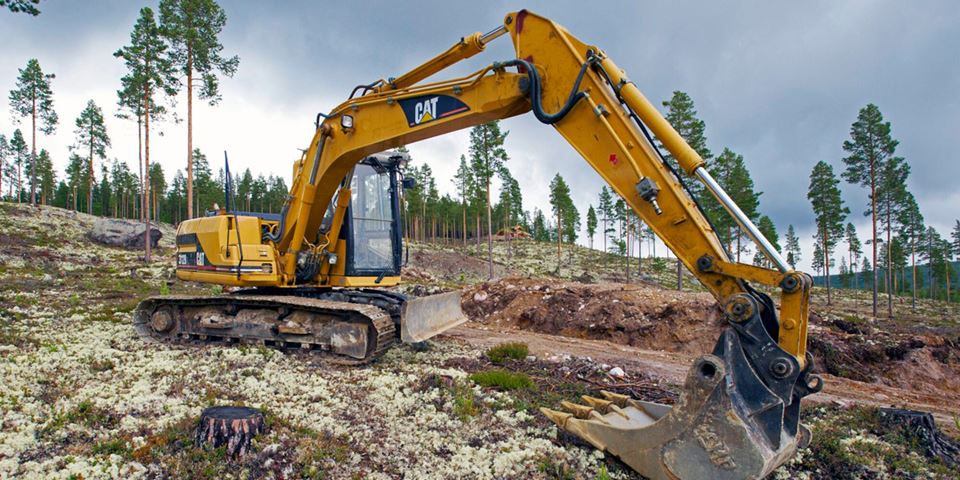The opinions expressed in this article are those of the authors alone. This article was first published in the engineering periodical Teknisk Ukeblad and is reprinted here with the permission of the magazine.
In a series of recent programmes, the Norwegian national broadcaster NRK has demonstrated how Norway is destroying the natural environment, piece by piece, without any overall control of what is being lost. Viewers have learned that part of the reason for these losses lies in the national craving to develop renewable energy resources.
We think it worthwhile to remind people that last autumn, the government-appointed Climate Change Committee proposed that Parliament be presented with a set of integrated climate change mitigation and energy plans.
The committee also pointed out that tools must be identified to ensure that we take a longer term and more wide-ranging view when it comes to such planning. We interpret this to mean that Norway requires analyses that expose the full consequences of various so-called green energy initiatives including, not least, those impacts that we choose to call the ‘cumulative effect’ that the destruction of rare natural habitats has for the country as a whole.
In the spirit of the Climate Change Committee
We argue that the time has come to upgrade the analytical models that we currently use in this field with the aim of creating a comprehensive computational tool that effectively ranks energy development projects in accordance with the intentions of the Climate Change Committee. Such a tool will help us address questions such as:
will development proposal A destroy a rare habitat that will also be destroyed under proposals B, C and D if these are given the green light elsewhere in Norway?
will proposal E or F be the most favourable in terms of energy prices? Which will result in the highest levels of energy security?
And how will the answers to these last questions influence the ability of the energy system to balance variations in solar, wind and catchment inflow with the help of existing hydropower reservoirs?
Only ‘case-by-case’
Terms such as Boreal rainforest and Atlantic raised bog sound rather exotic and many Norwegian coastal zones are rich in both of these habitat types.
But when biologists sit down to assess the impacts of a nature-destroying action in their local area, they are unaware of the extent to which the same habitats are being lost as a result of similar actions elsewhere in the country. Somewhere, a line has to be drawn.
We argue that it is a weakness in current Norwegian practice that impacts on the environment are only assessed on a case-by-case basis. Before now, very few people have been aware of the cumulative damage that a succession of nature-destroying actions causes to the country as a whole.
Tough decisions
In future, Norway will have to take some tough decisions when it comes to acceptance of the consequences of the continued development of emission-free energy projects. But for this to happen, actors responsible for assigning priorities must be equipped with an awareness of the consequences of their choices.
Computational tools that provide some of the essential answers are already in existence, but we lack models that offer politicians, investors and other decision-makers the big picture.
It is fully possible to develop such models, and when we do, they must be transparent and utilise open data. The limited versions that currently exist are not very transparent. Transparency will ensure that a variety of expert centres will be able to contribute to their development. It will stimulate domestic and global collaboration in the field and will generate trust in the decision-making process among the general public.
Learning from history
It is essential that such tools are in place if the plans proposed by the Climate Change Committee are to represent a sound basis for the ranking of energy development projects. We can point to two previous examples of such ranking schemes attempted by Norway in the past.
In the 1980s, we saw the ‘Samlet plan for vassdrag” (Comprehensive plan for water catchments). The aim here was to create the foundation for a nationwide water catchment management system involving plans based on a method offering a systematic and verifiable ranking of proposed hydropower projects. The ranking criteria centred on the degree of conflict generated among user interests, combined with the economics of the respective hydropower facilities.
The Norwegian parliament later ranked project proposals according to the plan, with the result that only the cheapest and least controversial were given the go-ahead for licence evaluation. The scheme was finally abandoned in 2016.
Ended in disarray
A similar approach was attempted in 2019 in connection with the development of onshore wind power. The Norwegian Water Resources and Energy Directorate (NVE) prepared a national framework that involved identifying 13 areas as suitable for development. More than five thousand consultation responses were received, including much negative input from the municipalities.
The reason for the process ending in disarray may have been that the proposed framework took too little account of local planning commitments. In the end, the government ignored it. It is clear that we must learn lessons from the past when considering the Climate Change Committee’s proposal for an overall nationwide plan.
Forgetting the big picture
The majority of Norwegian futures analyses have considered the electricity supply system, but very few have examined the energy system in its entirety. Even fewer have examined the negative impacts that development has on the natural world. This simply emphasises the great need we have for analytical tools that enable us to consider the big picture.
Key issues include the essential decarbonisation of the transport and industrial sectors – a process that will require electricity from renewable sources, combined to some degree with hydrogen and bioenergy. New, evolving, industries will also place increasing demands on electricity supplies. At the same time, energy-saving initiatives linked to building stock have the potential to become Norway’s ‘biggest power station’. If this happens, it will reduce the need for new energy development projects. The increased use of district heating schemes represents an alternative to electrical heating and can exploit surplus heat that would otherwise be wasted.
There is no doubt that the energy system as a whole is very complex. Currently, however, Norway lacks adequate analytical tools that make use of links to our knowledge about the ‘cumulative’ effect that nature-destroying actions have on the country as a whole.
These are two good reasons why Norway should acquire a ‘compass’ that we can use to stake out our future course when it comes to energy exploitation.




